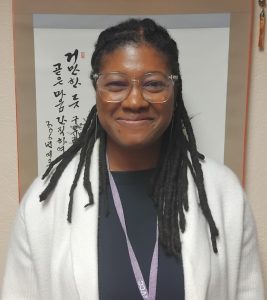If She’s ditsy, She’ll leave you dumbfounded
November 29, 2018
If you have a knack for being duped by women in short, sequined skirts and heels, you might just be on Broadway.
Although from afar, it may seem that the stage has always objectified women, Broadway writers have had a history of sneaking smart female characters into their plays under the guise of flashy showgirls.
IVCC stage director Don Grant Zellmer recalled the 1979 musical “Sugar Babies” as a prime example of this trickery:
”In the skits, even though they were objectified, [the women] were always the ones that pulled the wool over the
comic [characters]. The women always came out on top and shut down the guys, which is what made it very funny.
“There are these women that are gorgeous, and the comics are drooling over them and the last punchline was usually given to the girl which is a shutdown of the comics. So actually considering the time that it was written, I thought it was very empowering for women.”
But Broadway writers and directors did something even more important than create smart women: they created smart women of all types.
Although the casting of strictly thin, white women is still rampant in American media, Broadway was and still is a
figurehead in creating roles for people of color and people who do not fit the 5’9”, 100 pound mould.
Zellmer explained, “As people get enlightened, more and more is accepted like interracial casting. A lot of shows cast completely color-blind and will do interracial couples…. And then there are many shows out there about racial tensions like “Once on This Island,” “Ragtime.”
He continued, “And I feel like as we’re enlightened, some of those things can be explored even deeper—like when “Ragtime” came out, that was so powerful… It’s shows like that that can now explore how awful our history has been. It would have been taboo a few decades back.”
“Ragtime” (1996) explores the social and class divide between African-American communities, white suburbia and
immigrants, which, of course, creates many roles for people of color.
Because of trailblazing shows like this, the image of the leading lady has gone from practically Aryan to much more diverse and well-rounded.
And with the recent virility of “Hamilton: An American Musical” (2015), the nation’s eyes have been opened to see
that beauty does not have one face.
Inspired by the diverse casting of “Hamilton,” Drury Lane Theatre in Oakbrook Terrace, Ill., recently did a performance of “42nd Street” with a cast made up entirely by people of color.
And with the obvious disregard in modern politics for women, people of color, the LGBTQA+ community and others labeled as “minorities” in America, this positive representation is so important.
Mental health therapist Christine Caputo explained, “I think Trump has kind of liberated—as odd as that is to say—a movement right now… the movement that was forced upon people because of our [poor] leadership. We see restrictions all the time everywhere, so we still have a lot of work to do.”
But outside of political tensions, Broadway shows have always seemed to show that women should not be confined to the neat boxes to which television and movies have restricted them.
“Waitress” (2015) is about a pastry chef who finds the strength to leave her abusive husband only after having their baby. “Hairspray” (2002) shows a short, stout girl winning the heart of the teen heartthrob. “She Loves Me” (1963) displays a woman who is valued for her brains and sales ability, rather than her looks.
Though Broadway might seem like the land of the ditsy showgirl, a front row seat and a keen ear helps the audience find that her voice may be ditsy, but her ideas are brilliant.



